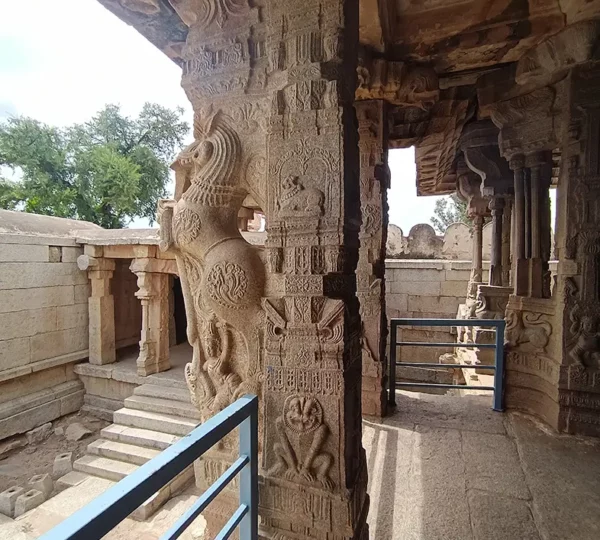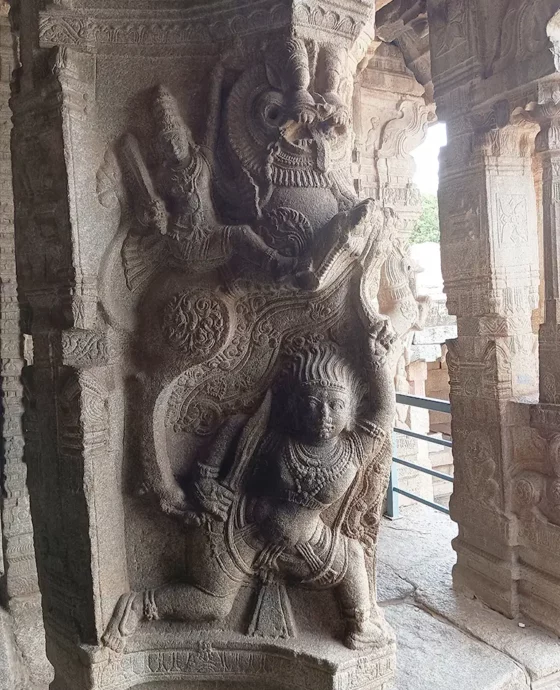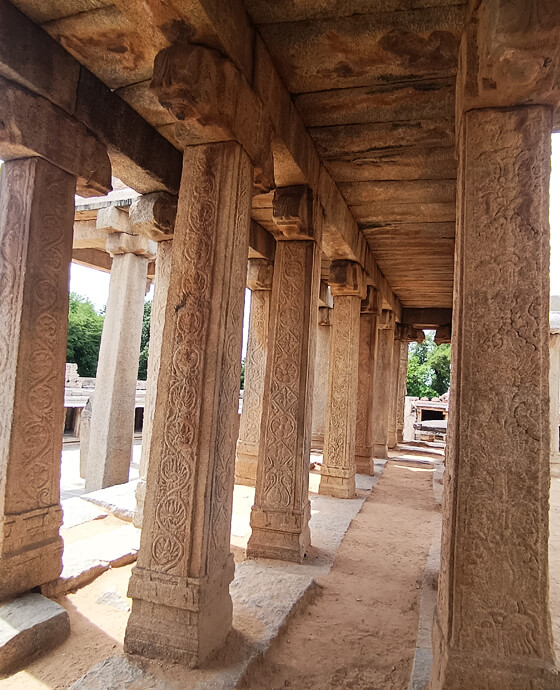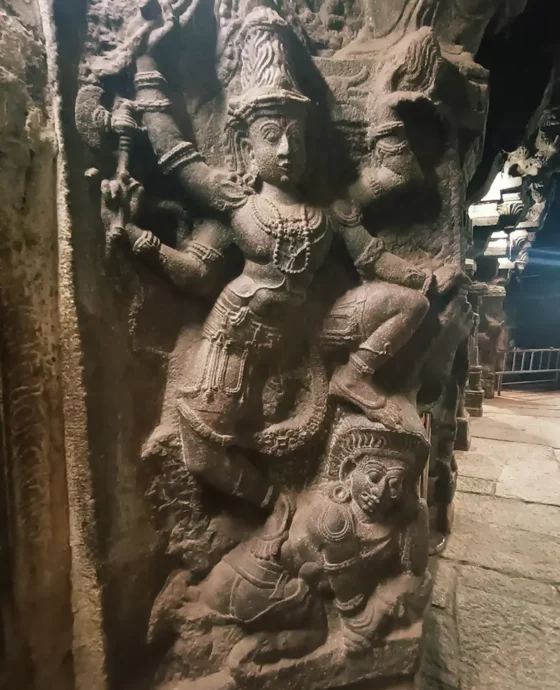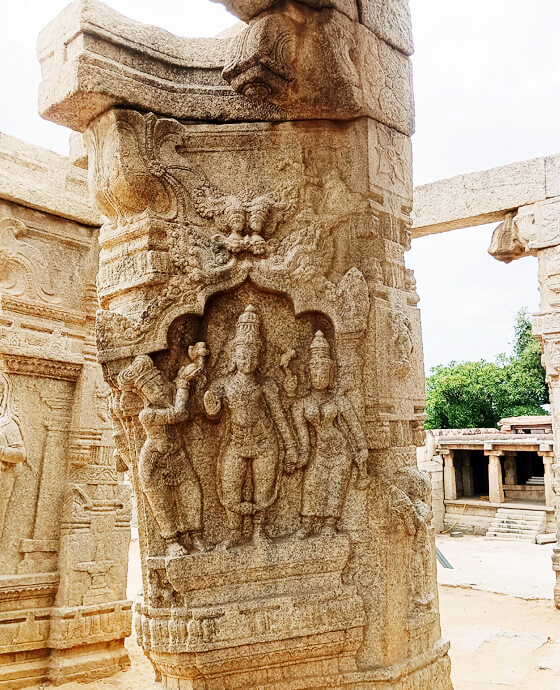Mukha Mandapa Photo Gallery
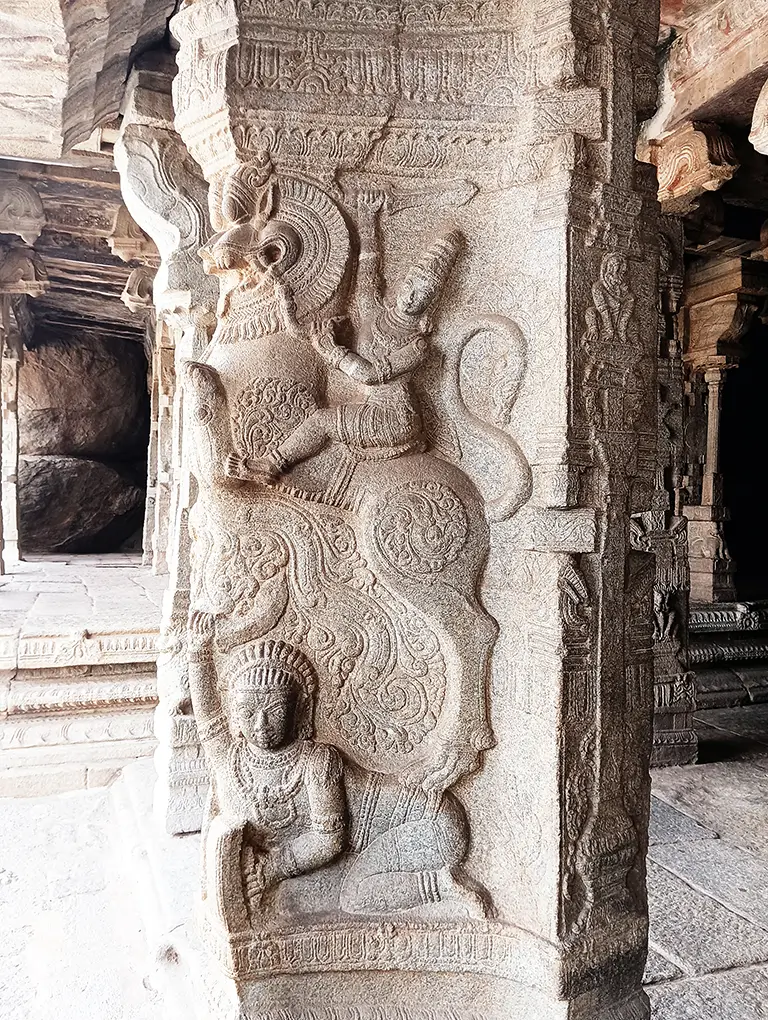

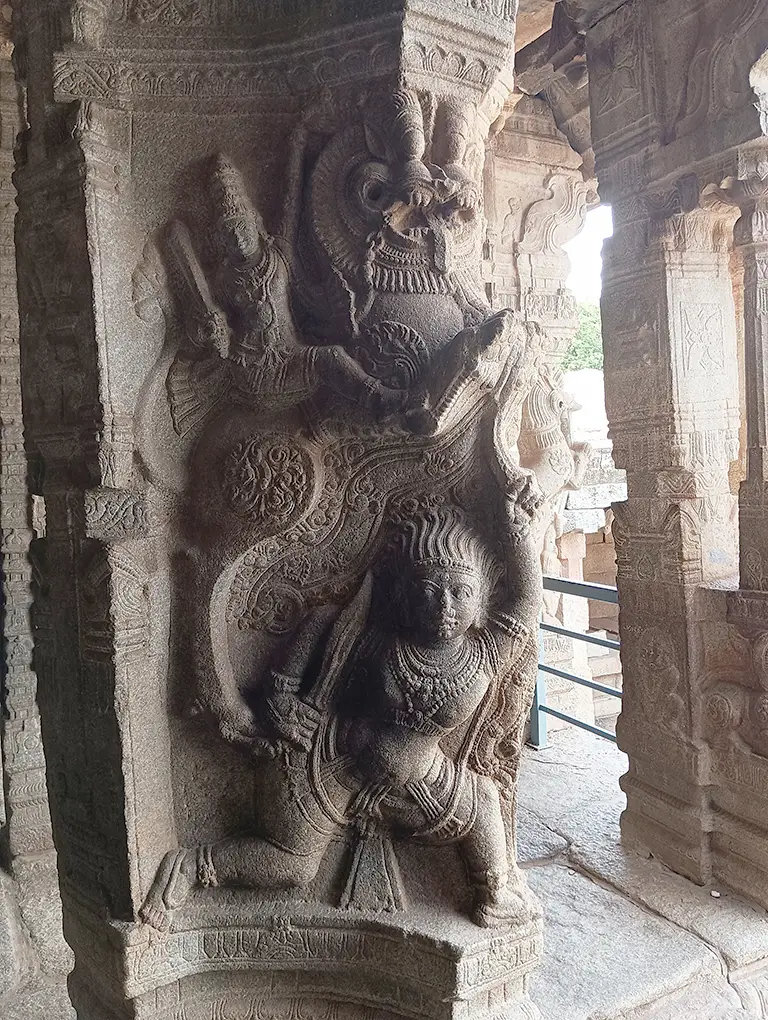
The Central Pillars: A Fascinating Glimpse
The Mukha Mandapa features four central pillars with Vijayanagara corbels, each contributing to the overall grandeur of this space. These central pillars create a focal point within the mandapa and offer a fascinating glimpse into the artistic intricacies of this era.
The Dasavataras: A Painting on the Ceiling
As you gaze upon the ceiling of the Mukha Mandapa, you’ll discover a visual treat in the form of paintings depicting the dasavataras. These divine incarnations, celebrated in Hindu mythology, come to life in vibrant hues on the ceiling, adding a layer of spirituality to the artistic splendor.
The Dvarapalakas: Guardians of the Sanctuary
As you make your way from the Mukha Mandapa to the antarala, you’ll encounter the presence of dvarapalakas, the guardians of the sanctuary. These imposing figures, positioned on either side of the entrance, serve as protectors of the sacred space, welcoming devotees and visitors alike.
A Journey to the Sanctum Sanctorum
The adhistana of the garbhagriha and the antarala of the Virabhadra shrine are adorned with a series of architectural elements that create a visually stunning ascent. The sequence includes upana, patta, padma, broad patta, gala, tripatta, patta, alingapattika, and more, each element adding to the grandeur of the sanctum sanctorum.
The Vimana and Its Architectural Beauty
The vimana of the Lepakshi Temple, visible from the Mukha Mandapa, is an architectural masterpiece. It comprises two talas with a kuta, panjara, sala, panjara, and kuta series. Above the second tala, you’ll find a step adorned with nandis in the four corners. The sikhara, which is round and belongs to the Vesara order, adds a touch of architectural finesse to the temple’s structure.
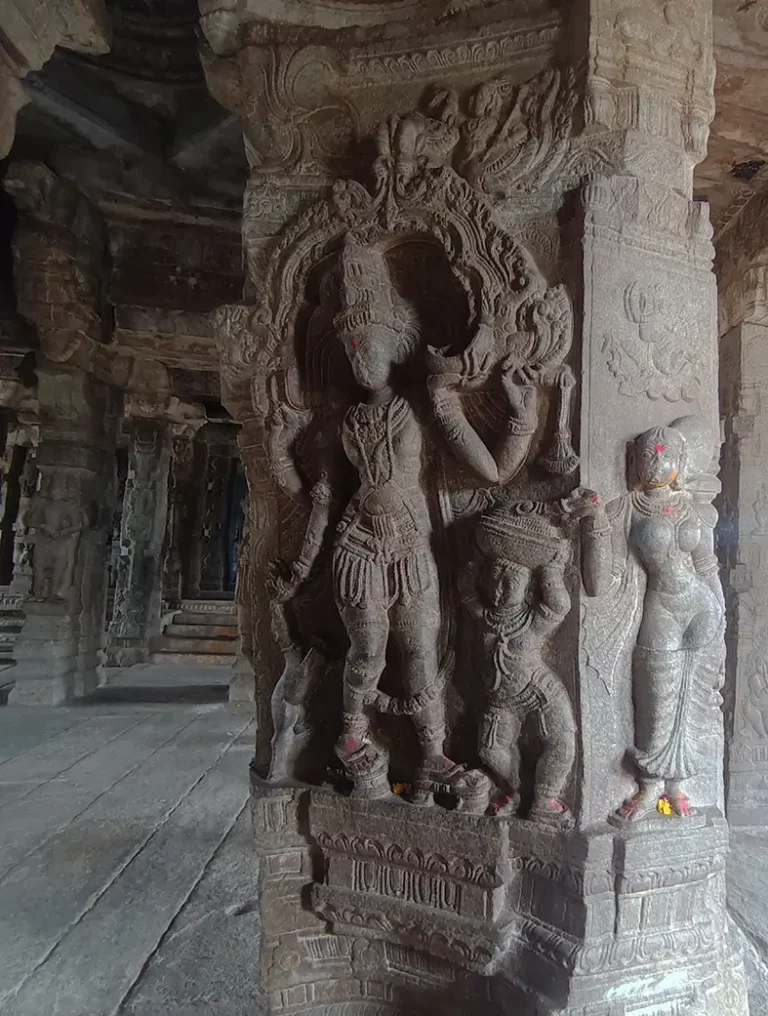
Virabhadra: The Divine Presence
The heart of the Lepakshi Temple is the garbhagriha, which houses an imposing image of Virabhadra. This sacred deity stands as a symbol of divine energy, radiating a sense of reverence and spirituality that captivates the hearts of all who visit.
Artha Mandapa: Where Music and Dance Flourish
The journey within the temple continues as you enter the Artha Mandapa, a space adorned with sculptured pillars that come to life with life-size musicians and dancers. These pillars showcase mythological stories, including depictions of Ananthasayana, Dattatreya, Narada, Chaturmukha Bramha, and Rambha, each adding a layer of artistry and storytelling to the temple’s architecture.
A Canvas of Stories: The Pillars and Ceilings
As you explore the temple further, you’ll find that the pillars and ceilings are not just architectural elements; they are canvases that narrate stories from mythology, epics, and religious texts. The surface, coated with a layer of lime mortar, serves as a canvas for paintings that have endured the test of time.


